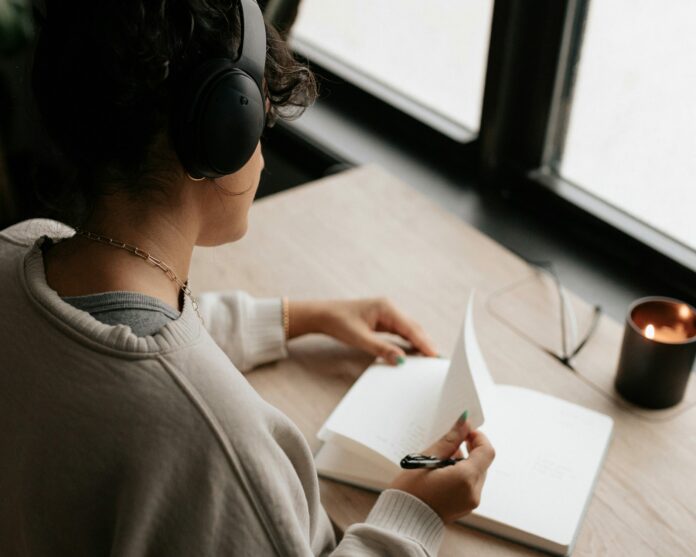[ad_1]
Being productive is like having a superpower in your back pocket. It’s not about just getting things done; it’s about feeling accomplished, motivated, and in control of your life. When I follow my rituals for productivity, I feel like I’m making the most of my time and talents, which is incredibly satisfying.
One of the best things about being productive is that it allows me to pursue my passions and goals with purpose. Whether advancing in my career, working on a personal project, or simply keeping my home in order, being productive helps me move closer to where I want to be in life.
Another thing is that productivity also has a way of boosting my mood and confidence. There’s something about checking off tasks on my to-do list that makes me feel capable and empowered. It’s like each small accomplishment adds up to a greater sense of success. And that is a great motivator to keep going.
Being productive is so important to me because it frees up time for the things that truly matter. By efficiently managing my time and tasks, I can spend more quality time with loved ones. I can also pursue hobbies, and take care of myself both mentally and physically.
Being productive isn’t just about being busy; it’s about being intentional with my time and energy. It’s about setting goals, staying focused, and making the most of each day. And for me, that’s a pretty good reason to strive for productivity.

How Your Rituals Can Enhance Your Productivity
Rituals are like my secret weapon when it comes to staying productive. They’re not just routines; they’re intentional practices that help me stay focused, motivated, and on track with my goals. Here’s why I think rituals are an essential tool in productivity:
Structure and Predictability
Firstly, rituals create a sense of structure and predictability in my day. Knowing that I have certain rituals to start and end my day helps me feel more organized and in control. It sets a positive tone and helps me change smoothly between different tasks and activities.
Correct Mindset
Secondly, rituals help me get into the right mindset for work. For example, my morning ritual is making a cup of coffee, journaling, and doing a quick workout. This helps me wake up my mind and body and prepare for the day ahead. It’s like a mental warm-up that gets me ready to tackle whatever comes my way.
Focus and Momentum
Rituals also help me stay focused and avoid distractions. For example, I have a ritual of setting specific goals for each work session. Then I use a timer to stay focused until I reach those goals. This helps me stay on track and avoid getting sidetracked by less important tasks or distractions.
Another reason why rituals are essential for me is that they help me build momentum. When I consistently follow certain rituals, they become habits. Then I can rely on them to keep me moving forward, even when I don’t feel motivated. This consistency is key to long-term productivity and success.
Balance
And finally, rituals help me create a sense of balance in my life. By using rituals for self-care, relaxation, and reflection, I ensure I’m not just busy but also taking care of my well-being. This balance is crucial for maintaining high levels of productivity and preventing burnout.
Rituals are an essential tool in my productivity toolbox because they provide structure. They help me get into the right mindset, stay focused, build momentum, and create balance in my life. They’re not just routines; they’re powerful practices that help me make the most of my time and energy.

How Are Rituals Different Than Habits?
To me, rituals are like the special sauce that adds flavor to my day, while habits are more like the bread and butter.
Rituals are intentional and meaningful practices that I do with awareness and purpose, like my morning meditation or evening gratitude journaling. They help me connect with myself and set a positive tone for my day.
On the other hand, habits are more automatic behaviors, like brushing my teeth or making my bed. While both are important, rituals have a deeper significance and impact on my well-being. They are always helping me stay grounded and focused in a busy world.
How To Make Your Own Rituals For Productivity
The Key: Identify Your Own Productivity Needs
To identify my productivity needs, I start by looking at my daily routines and habits. I ask myself questions like, “When do I feel most energized and focused?” and “What tasks do I struggle with the most?” This helps me pinpoint areas where I can improve. I also pay attention to my environment and how it affects my productivity.
For example, I notice if I work better in a quiet space or if background noise helps me concentrate. By being aware of these factors, I can tailor my rituals for productivity. Therefore I hone those strategies to suit my individual needs and maximize my efficiency.
Self-Assessment To Identify Your Productivity Needs:
Start by asking yourself these questions. Your answers will help you identify where your can most benefit from having rituals in your day:
- Energy Peaks and Valleys: When do you feel most energetic and focused during the day? Are there certain times when you feel more sluggish or easily distracted?
- Task Difficulty: Which tasks do you find most challenging or time-consuming? Are there specific types of tasks that always seem to drag on?
- Environment Preferences: Do you work better in a quiet environment or with background noise? Do you prefer natural light or artificial light?
- Distraction Triggers: What are your biggest distractions? Is it social media, emails, or something else? How can you minimize these distractions?
- Work Break Preferences: How often do you need breaks? What activities help you recharge during breaks?
- Goal Clarity: Are your goals clear and specific? Do you have a system to track your progress towards these goals?
- Work-Life Balance: Do you feel overwhelmed with work or do you have enough time for personal activities and relaxation?
- Technology Use: Are there any productivity tools or apps that could help you better manage your time and tasks?
Understanding your own workflow and energy levels is like having a secret weapon for productivity. Being in tune with your own natural rhythms is key to achieving that.

How To Establish Your Rituals For Productivity
Setting up a ritual is fairly simple and straightforward! They ideally should take anywhere from 1 minute to 5 minutes tops. They are quick actions meant to help you focus and switch tasks.
Here’s a step-by-step guide to get you started:
- Choose a Focus: Decide on the purpose of your ritual. Is it to start your day off right, enhance your creativity, or wind down in the evening?
- Select Activities: Pick activities that align with your focus. For example, if you want to start your day positively, you might include meditation, stretching, or journaling. If you want to focus strictly on work, your ritual might involve clearing your desk off, getting your coffee and water, and setting timers.
- Start Small: Begin with a simple ritual that you can easily incorporate into your routine. As you become more comfortable, you can add more elements. For example, you might start by clearing your desk off to work and eventually move to finding a few timers and apps that help you stay focused.
- Be Consistent: Stick to your ritual as much as possible. Consistency is key to making your ritual effective for the work you need to do.
- Reflect and Adjust: After performing your ritual for a while, reflect on its effectiveness. Adjust as needed to better suit your needs and goals.
- Enjoy the Process: Most importantly, enjoy the process! Rituals are meant to enhance your life, so savor the moments you spend on yourself and your well-being as you work to be more productive and efficient in the tasks you need to get done!
Places In Your Day That Can Benefit From Having Distinct Rituals
There are many places in your day that can benefit from having rituals. They are especially great when you change to a time of focus or away from a time of focus. Here are some examples:
- Morning Routine: Starting the day with a set of rituals helps set a positive tone and mindset for the day ahead.
- Transition Times: Rituals can be helpful during transition times, such as when leaving work or arriving home. This can help to help shift focus and unwind.
- Meal Times: Creating rituals around meal times, such as setting the table or practicing gratitude before eating, can enhance the dining experience.
- Work Breaks: Rituals during work breaks can help refresh the mind and body. For example, stretching or going for a short walk,
- Evening Wind-Down: Establishing a bedtime ritual can signal to your body that it’s time to relax and prepare for sleep.
- Weekend Rituals: Having rituals for the weekend can help create a sense of routine and enjoyment. This could mean a Saturday morning hike or Sunday meal prep

How Can You Incorporate Rituals For Productivity Into Your Day?
Incorporating rituals into your daily routine can be a game-changer for productivity. Whether a morning routine to kickstart your day or an evening wind-down ritual to prepare for tomorrow, these intentional practices can help. You will find you stay focused, motivated, and on track with your goals.
By understanding your own workflow and energy levels, you can tailor your rituals to suit your needs and maximize your efficiency. So why not give it a try? Start small, experiment with different rituals, and find what works best for you. Before you know it, you’ll be harnessing the power of rituals to supercharge your productivity and achieve your goals.
More Posts on GenTwenty on Productivity:
Don’t forget to follow GenTwenty on Instagram, Pinterest, and Facebook for more life tips and hacks for your twenties!
About the Author
[ad_2]
gentwenty.com







